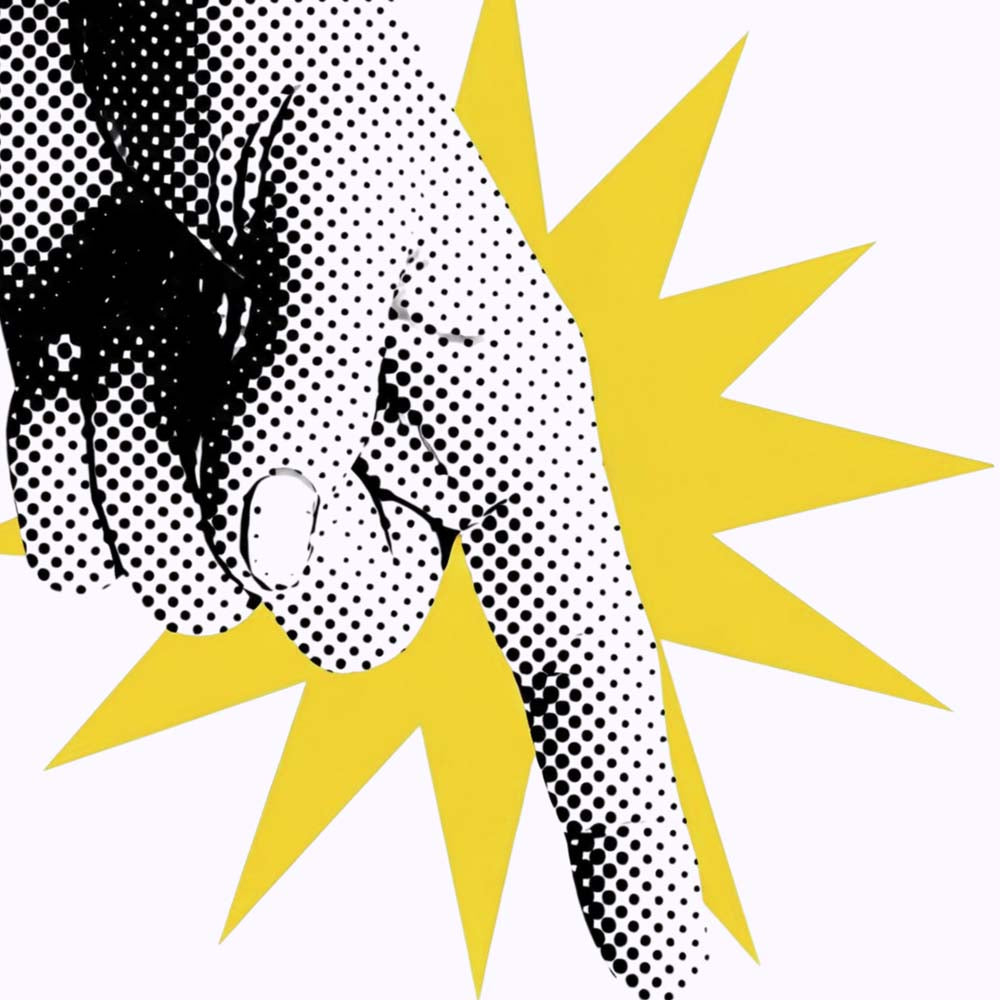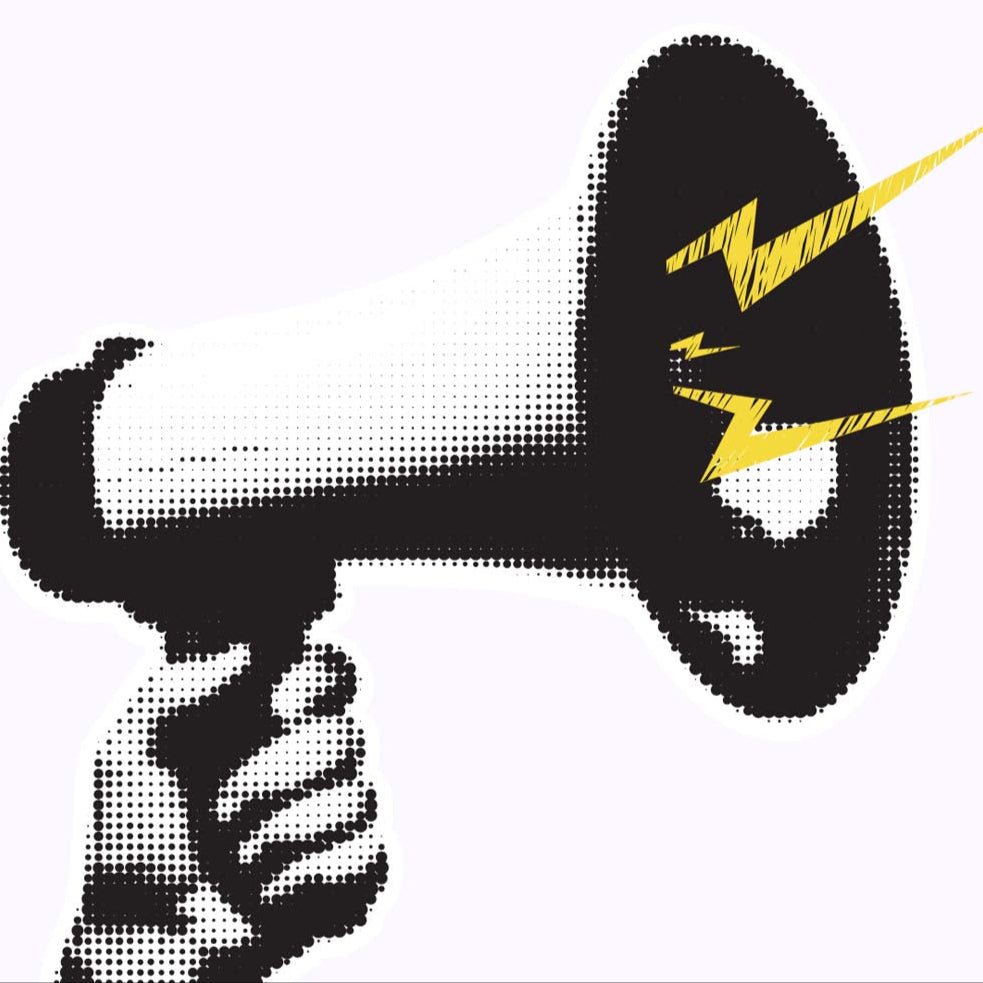Have you ever heard of the W.I.T.C.H. movement of the late 1960s?
I hadn't, and was surprised I hadn't. My mum was a little involved in the feminist movement, but this was relatively short-lived and took place while they were living in Africa. When my friend Jess told me about them, after meeting Paula Russell-Gilford, who has chosen this almost forgotten women’s movement as the topic of her Master's Degree, I was dying to know more – and I figured the Persisterhood would too. So, Jess, who has been helping out behind the scenes at Wear and Resist, sat down with Paula over a coffee and asked her all about them.
Jess: Until I met you, I had never heard of the W.I.T.C.H. movement, can you summarise what they were about, and how you came to learn about them?
Paula: I was researching witches and feminism and I found an article, in a teen magazine, and have since researched them further: the Women's International Terrorist Conspiracy from Hell. They were a US based second-wave radical feminist group, formed in 1968. They dressed as witches, conducted guerilla street theatre, called ‘zaps,’ where they ‘hexed’ capitalism and the patriarchy. They were amazing and so strong to be doing this in 1968, but still most people I meet have never heard of them. I knew I had to write about them.

Jess and Paula
Jess: What was it that appealed to you enough to focus on them for your thesis?
Paula: To be doing this kind of demonstration in 1968, was just incredible. 1968 was a tumultuous year in the US: civil rights, anti-war and race demonstrations and disobedience were rife. The fact that these women stood out amongst this backdrop spoke out to me as a woman and a feminist. They had decided that action was the way forward and they delivered. They were also very humorous – having fun, making up hexes and dressing up – proving that feminists do have a sense of humour!

All of the black and white pictures used here were taken by Bev Grant, a member, activist, musician and photographer.
Jess: Do you see parallels with any modern-day movements?
Paula: I see parallels with all ‘performative’ demonstrations held today. W.I.T.C.H. as a movement only lasted a couple of years but W.I.T.C.H. covens re-emerged in 2016, across the US to hex Donald Trump.

A modern-day W.I.T.C.H. demonstration. Photo by Claire Sasko
Jess: Do you think there is still a place for a group like W.I.T.C.H. today?
Paula: I honestly think there is always a place for this type of group. At the time of W.I.T.C.H., the image of the witch was not as positive as it is now – over the years the image of the witch has become an ever-increasing positive image for feminists, as the witch is seen as both persecuted and empowered.
Jess: Having spent time in the US and the UK, what similarities and differences do you see in the feminism movements in each country? What could we learn from each other?
Paula: I think we all need to understand the strength we have when we unite: when we see our similarities and not our differences. Woman is a powerful word and movement if we embrace it.
Jess: You have two daughters, has this changed how you feel about feminism, its aims and the ways in which women work to gain equality?
Paula: I am more of a feminist as a result of this research for my thesis. I see where women were in politics and society in 1968, compared to where we are now, and I am constantly worried that we are in danger of losing what these amazing women fought so hard for.
Jess: At Wear & Resist, there is an aim to ‘own the insult’. How do you feel about the labelling of women as ‘witches’ (and other terms such as Crone or Bint), do you consider it derogative?
Paula: I understand the argument and desire behind 'owning' the insult and think why not? The image of the witch has improved since 1968 - with positive depictions in media and film (Hermione was a hero in our house!). I believe that those who use it today as a slur are missing the point and are behind the times as witches are a symbol of female strength and survival: so call me a witch any day! As Pam Grossman says: 'Show me your witches, and I’ll show you your feelings about women.' (Waking the Witch: Reflections on Women, Magic, and Power)

Paula Russell-Gilford
Want to know more? Read on for a brief deep dive into the W.I.T.C.H. movement
The movement was started by members of a subset of second-wave feminism who thought that capitalism — rather than men — was the true enemy of women. Their ‘zaps’ were a mixture of poetry, witchcraft, and protest, which feminist Susan Brownmiller has described as ‘hit-and-run guerrilla theater,’
The first event happened in New York in 1968 on Halloween, when women dressed as witches and marched down Wall Street to hex the Financial District, chanting:
Wall Street, Wall Street, mightiest wall of all street. Trick-or-treat, corporate elite, up against the Wall Street!
And who knows, maybe it worked, because the Dow Jones Industrial Average did drop unexpectedly the following day.

W.I.T.C.H. demonstration on Wall Street by Bev Grant
WITCH at the time stood for Women's International Terrorist Conspiracy from Hell.’ After the first protest, covens began to spring up around the US.
WITCH is an all-women Everything. It’s theater, revolution, magic, terror, joy, garlic flowers, spells ... It’s an awareness that witches and gypsies were the original guerillas and resistance fighters against oppression… There is no ‘joining’ WITCH. If you are a woman and dare to look within yourself, you are a Witch…Whatever is repressive, solely male-oriented, greedy, puritanical, authoritarian – those are your targets. (Witch Leaflets)
Collectivity was at the heart of the movement, with one leaflet stating: ‘The power of the Coven is more than the sum of its individual members, because it is together.’
A W.I.T.C.H. zap in February 1969, targeted the first New York Bridal Fair. Members covered the area beforehand with thousands of stickers printed with ‘Confront the Whoremongers’ a pun on the common anti-war slogan, ‘confront the warmongers’. They performed an ‘Un-Wedding’ ceremony in the morning, declaring themselves – in the name of Revolution – Free Human Beings and showed up in black veils to the event singing: ‘Here come the slaves, off to their graves,’ and carrying signs that said, ‘Always a Bride, Never a Person’.
In a miscalculated stunt they released 150 white mice, but the women attending the show didn’t react as planned and instead of screaming and running away in fear, hurried around trying to save the poor mice. They were criticised by other feminists at the time, who pointed out that they had reinforced the sexist stereotypes of women being afraid of mice, and that their actions were alienating other women. Following the Bridal Fair, W.I.T.C.H. turned away from using shock tactics to focus more on consciousness-raising at their protests.
Their name was fluid, changing to suit their protests. When AT&T fired two typists who insisted on being called ‘women’ rather than ‘girls,’ WITCH became Women Incensed at Telephone Company Harassment. Other examples included ‘Women Infuriated at Taking Care of Hoodlums’, ‘Women Indentured to Traveler's Corporate Hell' and Women’s Independent Taxpayers, Consumers, and Homemakers.

An original W.I.T.C.H. leaflet
Double, bubble, war and rubble,
When you mess with women, you’ll be in trouble;
We’re convicted of murder if abortion is planned;
Convicted of shame if we don’t have a man,
Convicted of conspiracy if we fight for our rights;
And burned at the stake when we stand up to fight.
Double, bubble, war and rubble
When you mess with women, you’ll be in trouble.
We curse your empire to make it fall-
When you take on one of us, you take on us all!
When Black Panther women held in the New Haven Niantic Women’s jail were denied prenatal care and were being forced to give birth under armed guard in November 1969 W.I.T.C.H. became Women Inspired To Commit Herstory. This acronym was coined by Robin Morgan, a co-founder, who was the first person to use the term ‘herstory’ in print, according to the Oxford English Dictionary.
She would later dismiss W.I.T.C.H. as a form of ‘clownish proto-anarchism’ that had not ‘raised our own consciousness very far out of our own combat boots.’ But as Elizabeth Garner Masarik says in her incredible podcast on the subject, Robin Morgan might have later regretted many of the actions she was involved in, but she also wrote that ‘we were also, in all fairness, newly aroused and angry about our own oppression as women – and we wanted to move. It seemed intolerable that we should sit around ‘just talking’ when there was so much to be done. So we went out and did it.’
The movement only lasted a couple years. But in 2015 the Chicago chapter was re-established by three women. Their protests focused on affordable housing, abortion rights and the Trump administration's condonation of racism and sexism. More W.I.T.C.H. protest groups formed in Portland and Boston inspired by the tactics of the original movement.
My own Witch necklace was inspired by a Brooklyn coven of witches who met in a bookshop to put a hex on Bret Kavanaugh in 2018 during the Supreme court hearing, when he was accused of sexual assault by Christine Blasey Ford. The coven called it ‘an act of resistance and resilience’. Dakota Bracciale, co-owner of Catland Books and one of the organisers of the event, said that the hex was ‘aimed at exposing Brett Kavanaugh for what he truly is, to cause him harm and see him undone’. You can read more about it here.
I was also tired of hearing MAGA twits going on about 'witch hunts' and pictured what it would like to flip the narrative and pictured groups of witches hunting these b*st*rds down – a thought summed up by women's rights activist, Peggy Dobbins, quoted in an excellent article, The Life and Death of a Radical Sisterhood: Marcia says, “Well, if women’s liberation does become a household word, there will be witch hunts and we will be the witches.” And I said, “Let’s embrace that!”
Anyone up for starting a UK chapter? Women Incensed Though Constantly Hoping? Women Improving The Conservative Hellscape? Women Insisting on Truth, Courage and Healing? Tell me yours!







